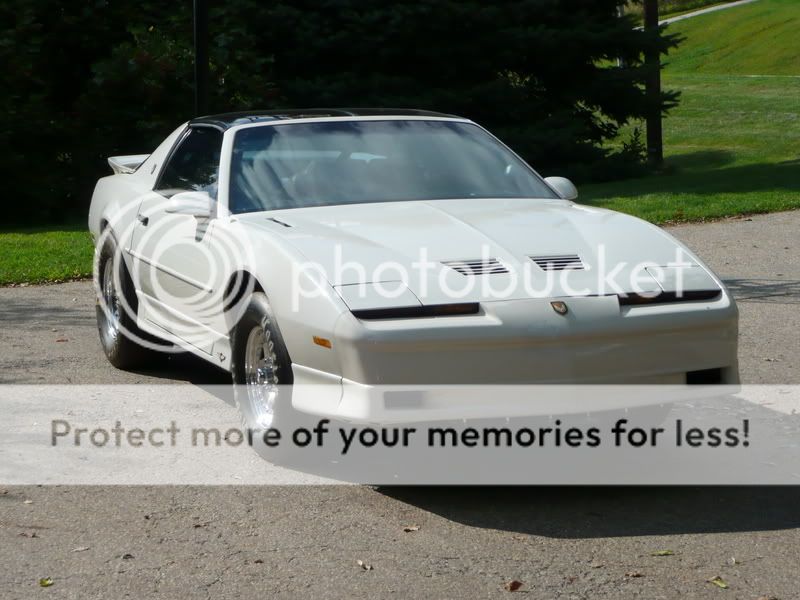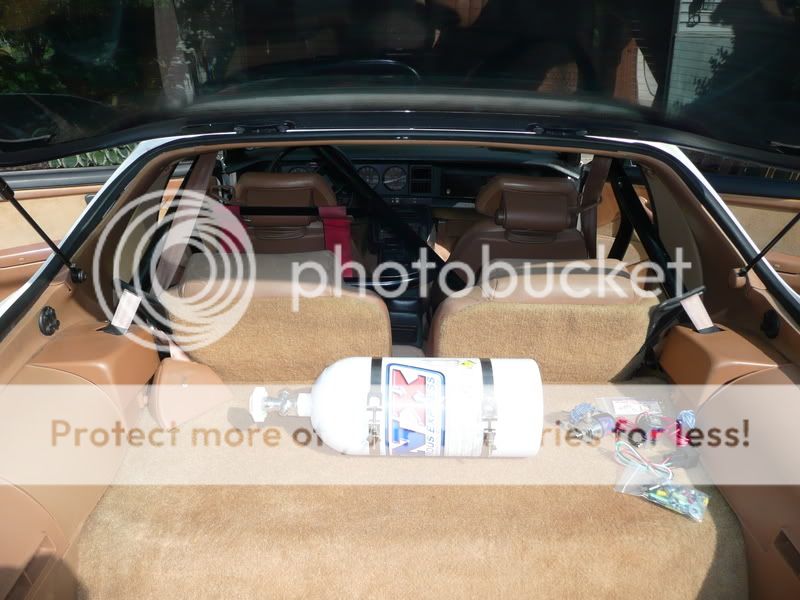Well, I have not been on here for years but from the posts on here it seems like yesterday. The comments on nitrous never changes.

I started running nitrous on Gns back around 1988. On a totally stock engine with 10" slicks, aftermarket rims, and stock chip. Started with 50hp jets which produced high 12.9's. Jumped up to 75 jets with same setup and ran 12.6's. Later went to 125hp jets and started having problems with fuel pressures (fuel pump not keeping up with fuel requirements). I went with upgraded fuel pump from ATR (back when ATR was the only place to get upgraded parts and newsletters). Had ATR burn a chip with less timing. Motor was holding up fine at that point but kept on having tranny problems.
This was with a single nozzle NOS in the uppipe system.
I have run nitrous on 5 different GNs. Most with a single nozzle setup and some with the 6 foggers setup in the dog house.
Tips I would give are:
1. upgrade the fuel system-make sure it can keep up with the fuel demand.
2. knock sensor- its the detenation that will kill the motor
3. colder plugs- plugs depend on how much nitrous hp
4. fuel pressure gauge- make sure you are not losing fuel pressure
5. adjust boost to right level- every 50hp of nitrous will increase boost about 2 psi
6. Timing- retard timing about 2 degrees for 50hp nitrous
7. check plugs- it will give you the best info on your tune
8. If your new to nitrous start small and increase to where you want to be. Jets are cheap.
9. If you run a NOS setup I and you notice a popping condition. You will probably think you are leaning out. But it is probably just the opposite. I had two cars that I put on a new NOS system with the recommend jets that started popping as if it was leaning out. Went to a double pump, increase gas jet, backed down the timing and nothing worked. Finally had a friend tell me that NOS sends them out with very conservative jets (to rich) so you do not break anything. Ended up leaning the gas jet and WOW, no popping and it cleaned right out. Just something to watch out for.
I have burned chips for 1 of the local guys here that was running a 140k mile stock long block GN that had been lightened as much as he could and keep it street legal. With my chip, he was able to run 10.8's in vegas a couple of years go. He was running the single fogger in the uppipe probable hundreds of times and uses it the full run, not just to spool it up.
My concerns about running a wets system before the turbo are these:
1.fuel puddling, I use to have a 1978 Z1R turbo (kawasaki 1000 motorcycle with a turbo on it, one of the first turbo applications on a stock bike), it ran a carb before the turbo, but had a back time fouling the plugs because the turbo actually puddled the fuel and cause the bike to run rich at times. About every 20 minutes you would have open it up for 3-4 gears and clean it out. Not to mention change the plugs about every 2-3 weeks.
2. cooling the turbo down, not sure if that would hurt peformance to some degree
3.would it degrade the oil seals in the turbo and maybe weaken the blades by heating and cooling? don't kow
DonW has given some good advice but I am not sure why the doom and gloom about the single nozzle setup. I had ran up to 125hp hundreds if not thousands of times on full runs. My experience was that the back 2 cylinders actually ran not as lean as the front 4. I think that the what gas that didn't vaporize actually went to the back cylinders where more airflow went. There was a couple of times I got greedy and ran the nitrous without the right setup (nitrous chip or boost set to high) and I blew head gaskets. Both times it blew on #4 cylinder.
When I went to more than 150hp, I went the 6pack fogger setup. That way I could adjust the fuel for each cylinder. But each cylinder is different as each engine was different. On Ed's car (10.8 on stock long block) we are able to run 21 degree timing on 20lbs of boost with stock turbo, stock intercooler, and 36lb injectors with no detentation. On my car I was only able to get away with 18 degrees timing.
Right now I am putting together a 63 impala with a GN motor and a 6 pack fogger setup. Should have it together by next spring.



Chuck





